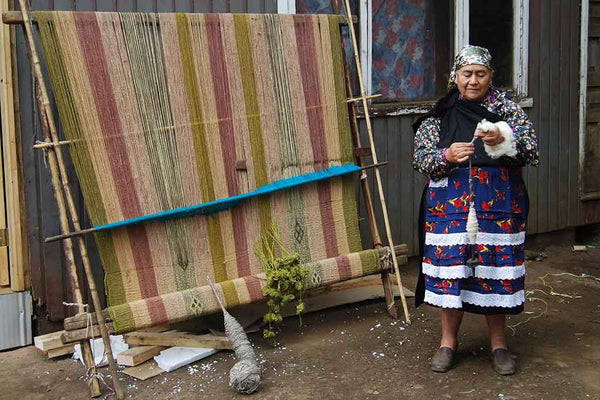the process
The vast majority of the yarns and textiles that you will find on this site have been handmade in Chile by artisans working in their own homes. We are privileged to work with highly skilled artisans who practise their chosen craft using traditional techniques that have been handed down to them from their parents and grandparents before them. It is our hope that through supporting the work of these artisans this knowledge base will stand a chance of being preserved for future generations.
|
The Raw Material
Resourceful by necessity, our spinners and weavers work with fleeces available to them locally. In the lush south, sheep are a traditional mainstay on family smallholdings, as well as grazing in vast flocks on the wide Patagonian plains. |
 |
 |
In the far north of Chile, herds of alpaca thrive on the high Andean plateaux (the 'altiplano'). |
|
Spinning
Washed fleece is traditionally spun into yarn using an huso (drop spindle). This home made device is simply a straight stick of wood weighted at one end, typically with a piece of clay or wood. Combed fleece is teased out as the spindle is dropped and spun to create a yarn. Two or three lengths of yarn may then be twisted together (plied) for extra strength and thickness. |
 |
 |
Dyeing
Many of the products that we sell are dyed using leaves, flowers, roots and minerals. Women collect dye-plants in the locality of their homes and boil them to extract the colour with which the yarn is then dyed. If a mordant is required to fix the colour, alum or salt is generally added. Many plant materials are seasonally available, and colour will vary according to factors such as location and weather conditions. Our weavings reflect the rich colour palette of the landscape and season in which they are created. |
|
Weaving
The majority of our weavers in Chile build their own looms out of timber sourced locally. The most commonly used types of loom are the upright “Mapuche” loom, which takes its name from Chile's main indigenous group from the Araucanía region of Southern Chile, and the horizontal “chilote” loom from the Chiloé Archipelago, which is worked from a kneeling position. |
 |
